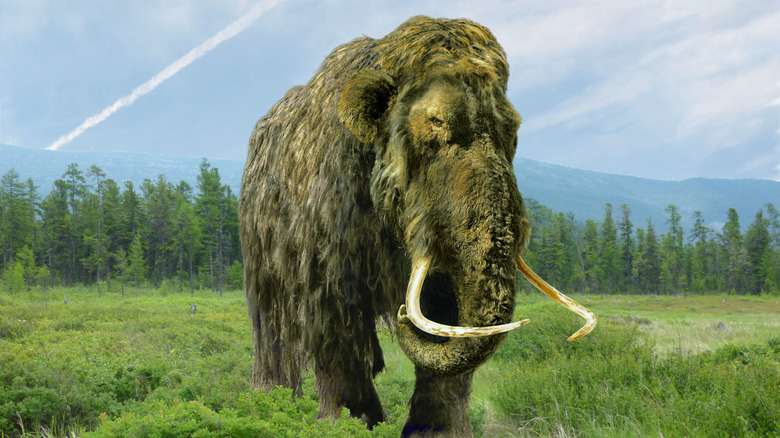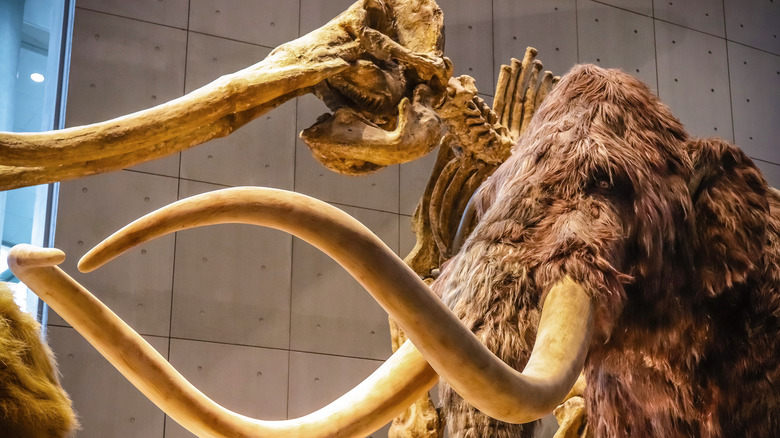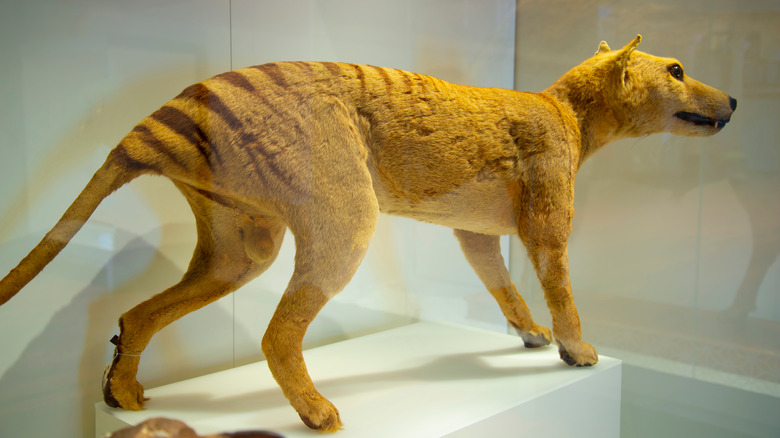Why The CIA Is Investing In Tech That Could Bring Woolly Mammoths Back To Life
The 1993 release of "Jurassic Park" made the general populace hesitant about resurrecting extinct species for fear of being eaten. However, it turns out that the movie, based on Michael Crichton's 1990 novel, wasn't actually that far off with its ideas of bringing animals back for a new life in the modern world. The good news is that the animal that scientists want to bring back isn't a big and dangerous dinosaur; rather, it's the big woolly mammoth.
The massive elephant-like animal became extinct around 4,000 years ago after years of its population dwindling and struggling to breed healthy new generations, according to Live Science. Now, a company called Colossal Laboratories & Biosciences sees several major benefits to resurrecting this long-gone giant. Bringing a now-extinct animal back to stomp once more is no easy feat, nor a cheap one either, for that matter. The scientific endeavor requires funding, and according to Live Science, that's coming from a CIA-funded venture capital investment firm, In-Q-Tel. Both In-Q-Tel and Colossal Biosciences have specific reasons behind this desire to bring back the woolly mammoth, and it seems possible that there may be some rather fluffy and massive mammoths walking around in the near future.
The underlying biotechnology needed to bring back the woolly mammoth has other applications
Colossal Biosciences has entire sections on its website dedicated to informing site visitors about what they call de-extinction and their desire to bring back the woolly mammoth. The company believes that by resurrecting the woolly mammoth, the opportunity to save modern endangered species like the Asian and African elephant will arise. Nor is this the only possibility that the company hopes to achieve. Among the goals set in place for reviving the mammoth are things like "To prevent the emission of greenhouse gases trapped within the permafrost layer — up to 600 million tons of net carbon annually" and "To establish a proven link between genetic sciences and climate change" (per Colossal Laboratories & Biosciences).
The protection of modern elephants and working to better understand and combat climate change are enticing ideas. However, In-Q-Tel is investing in the idea for its own reasons. Bringing back the woolly mammoth is only a small portion of what the underlying genetic engineering technology will be capable of doing. In an In-Q-Tel blog post, the company states it's interested in biotechnology in order to understand, read, and write DNA code and create things that could possibly solve global issues. That includes what can't be found in nature, such as insulin and other industrial materials.
The woolly mammoth isn't the only species scientists want to bring back
In-Q-Tel says it shares Colossal Biosciences' desire to use the woolly mammoth as a means to help combat climate change. In an In-Q-Tel blog post, the company stated, "How we employ the potentially staggering power of biotechnology to shape the planet and humanity itself will matter as much as our ability to do so." While the possibilities for the technology are seeming endless, it makes sense that the CIA-funded investment firm would want a hand in it.
The woolly mammoth isn't the only extinct animal on Colossal Biosciences' resurrection radar. The company also wants to bring back the thylacine, better known as the Tasmanian tiger (above), which officially went extinct when the last known living specimen died in captivity in 1936 (via Colossal Biosciences). There remains criticism and questioning regarding the project, and according to Gizmodo, critics believe that there's a serious flaw that lies with the fact that these extinct animals no longer have the habitat they previously lived in. These critics believe that the money funding the de-extinction would be better off going toward conserving modern endangered species. Either way, it might not be long before animals like the woolly mammoth and the Tasmanian tiger are no longer considered extinct.


